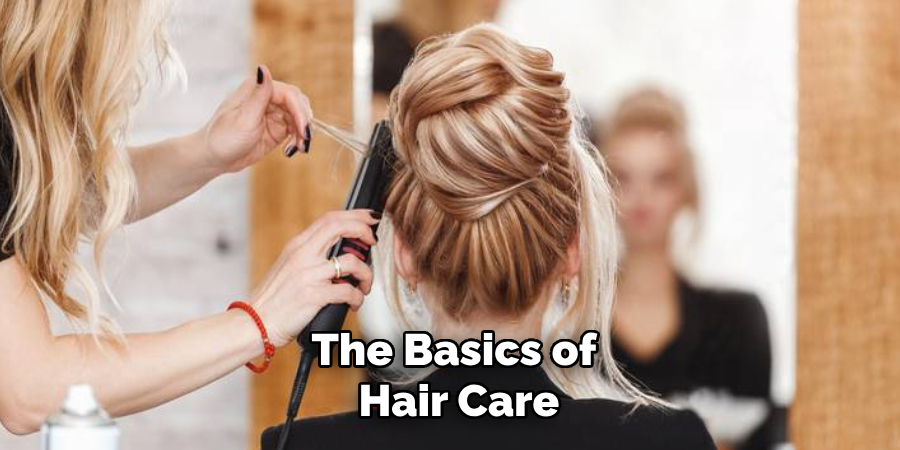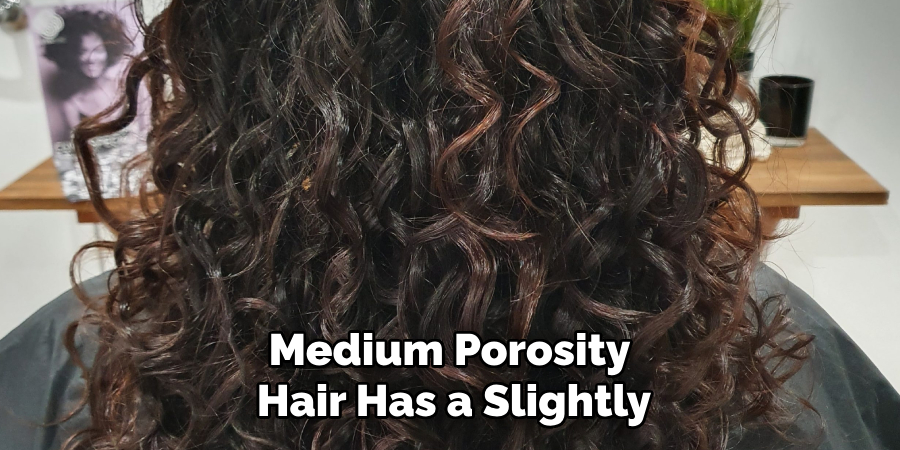Are you struggling to maintain healthy hair? Do you constantly try new products and treatments, but nothing seems to work? The key to having luscious locks lies in understanding what your hair needs.

Understanding your hair’s needs is essential for maintaining its health, shine, and overall appearance. Hair needs can vary from person to person, depending on factors such as hair type, texture, and external influences. Identifying what your hair needs involves observing and assessing its condition, listening to its signals, and implementing targeted care routines.
In this guide on how to tell what your hair needs, we will explore some key indicators and tips to help you determine what your hair needs and how to address those needs effectively. Let’s dive into the world of hair care and unlock the secrets to luscious, vibrant locks.
What Are the Benefits of Knowing What Your Hair Needs?
Here are some benefits of knowing and addressing the needs of your hair:
- Healthy Hair: When you give your hair the care it needs, you promote its health and strength. This results in softer, smoother, and more manageable hair.
- Long-Term Maintenance: By identifying your hair’s needs, you can establish a consistent and targeted care routine to maintain its health in the long run. This saves time and money and minimizes the risk of damaging your hair through trial and error with products.
- Enhanced Appearance: Healthy hair looks beautiful! By addressing your hair’s needs, you can achieve luscious locks that are shiny and full of life.
- Prevention of Hair Concerns: Understanding and addressing your hair’s needs can prevent many common hair concerns, such as breakage, split ends, dryness, and frizz.
What Will You Need?
Before we begin, here are a few things you will need to determine what your hair needs effectively:
- Time: Dedicate some time to observe and assess your hair’s condition properly. This may involve trying different products and techniques to see how your hair responds.
- Patience: Finding the right hair care routine may take some trial and error. Be patient and persistent in identifying what works best for you.
- Knowledge: Understanding the basics of hair care, such as different hair types, textures, and common concerns, can help you determine what your hair needs.
Once you have these essentials, you are ready to start!

8 Easy Steps on How to Tell What Your Hair Needs
Step 1. Analyze Your Hair Type
Understanding your hair type is the first step in determining its specific needs. Hair types can be classified as straight, wavy, curly, or coily. Consider the following characteristics to identify your hair type:
- Straight Hair: Straight hair appears smooth and lacks natural curls or waves. It tends to be more prone to oiliness and can be delicate or thick in texture.
- Wavy Hair: Wavy hair has gentle S-shaped waves that may vary in intensity. It is typically more prone to frizz and may exhibit a combination of characteristics from both straight and curly hair types.
- Curly Hair: Curly hair forms ringlets or coils, ranging from loose curls to tight corkscrews. It is more prone to dryness and frizz and can benefit from extra moisture and hydration.
- Coily Hair: Coily hair has a tight, springy coil pattern and appears densely packed. It is prone to dryness, requires significant moisture, and may benefit from protective styling techniques.
Understanding your hair type can help you better tailor your hair care routine and choose products that meet your hair’s specific needs.
Step 2. Assess Your Hair Texture
Hair texture refers to the thickness or diameter of your individual hair strands. It can range from fine, medium, to coarse. To determine your hair’s texture, take a single strand between your fingers and feel its thickness.
- Fine Hair: Fine hair has a small diameter and tends to be more fragile and prone to breakage. If you have fine hair, avoid heavy products that may weigh it down and cause further damage.
- Medium Hair: Medium hair is slightly larger than fine hair and less prone to breakage. This hair type can generally handle a wider range of products but may still benefit from lightweight options.
- Coarse Hair: Coarse hair has the largest diameter and is typically more resilient, but it may also be more prone to dryness and frizz. Use rich, nourishing products to ensure your hair receives enough moisture and hydration.

Understanding your hair’s texture is crucial in selecting the right products for your specific needs, as different textures require different levels of care and attention.
Step 3. Take Note of Your Scalp Condition
In addition to understanding your hair texture, paying attention to your scalp condition is equally important. The health of your scalp plays a crucial role in the overall health and appearance of your hair. Here are a few factors to consider:
- Dry Scalp: Dryness, itching, or flaking may indicate a dry scalp. Opt for moisturizing and hydrating hair care products that nourish the scalp and help restore its natural moisture balance.
- Oily Scalp: If your scalp gets greasy and oily quickly, you may have an oily scalp. Look for lightweight, oil-free hair care products that effectively cleanse the scalp without leaving behind residue or weighing down the hair.
- Sensitive Scalp: Some individuals may have a sensitive scalp that reacts to certain ingredients or environmental factors. Choose gentle and soothing hair care products specifically formulated for sensitive scalps to minimize any potential irritation or discomfort.
Step 4. Assess Your Hair Concerns
Identifying your hair concerns is an essential step in determining what your hair needs. Common problems include dryness, damage, frizz, and lack of volume. Take note of any specific issues you may be experiencing with your hair to address them better.
Step 5. Consider Any Chemical Treatments or Heat Styling
Chemical treatments and heat styling can have a significant impact on the health and needs of your hair. If you frequently dye, bleach, or chemically straighten your hair, it may require extra care to maintain its strength and moisture balance. Similarly, excessive heat styling without proper protection can lead to dryness and breakage. Be mindful of any treatments or styling methods you regularly use and consider them when determining what your hair needs.
Step 6. Take Note of Your Hair’s Porosity
Hair porosity refers to how well your hair can absorb and retain moisture. Genetics, chemical treatments, and daily care routines influence it. Identifying your hair’s porosity can help determine the type of products and techniques that will benefit it most:
- Low Porosity: Low porosity hair has a tightly bound cuticle layer, making it difficult for moisture to penetrate. This type of hair may benefit from lightweight moisturizers and deep conditioning treatments to help open up the cuticles.
- Medium Porosity: Medium porosity hair has a slightly raised cuticle layer for better moisture retention. This type of hair can benefit from various products and treatments, but avoid overloading it with heavy oils or butter.
- High Porosity: High porosity hair has a damaged or highly porous cuticle layer that allows moisture to enter and escape easily. This type of hair may require extra care and nourishment to maintain its moisture balance, such as regular deep conditioning treatments and sealing in moisture with oil-based products.

Step 7. Evaluate Your Current Hair Care Routine
Take a closer look at your current hair care routine to assess its effectiveness in meeting the needs of your hair type and porosity. Consider the following aspects:
- Products Used: Evaluate the products you use regularly, including shampoos, conditioners, styling products, and treatments. Ensure that they are suitable for your hair type and porosity. Look for ingredients that nourish and support your hair’s health.
- Frequency of Washing: Determine how often you wash your hair. Different hair types and porosities have varying needs regarding washing frequency. Adjust your routine accordingly to avoid excessive drying or buildup.
- Heat Styling Practices: Assess how frequently you use heat-styling tools such as flat irons, curling irons, or blow dryers. Excessive heat can damage hair, especially if it is already highly porous. Consider incorporating heat protectant products and limiting heat styling to protect your hair’s health.
- Conditioning and Deep Conditioning: Evaluate how often you condition your hair and incorporate deep conditioning treatments. Conditioning helps to moisturize and nourish the hair, while deep conditioning can provide added hydration and repair damage.
- Styling Techniques: Consider the techniques you use for styling and detangling your hair. Opt for gentle methods that minimize breakage and damage, such as using wide-toothed combs or your fingers for detangling.
Step 8. Consult with a Professional Hairstylist
Consulting with a professional hairstylist can provide valuable insights and personalized recommendations based on your hair’s unique needs. Hairstylists are trained to assess hair type, texture, porosity, and overall health, enabling them to suggest the most effective treatments, products, and routines. Additionally, they can identify any underlying issues with your hair or scalp that may require professional attention. Regular visits to a stylist can help maintain your hair’s health, address changes over time, and ensure that you use the best practices and products tailored to your goals. Whether it’s for a specific treatment or general advice, a professional’s expertise can make a significant difference in your hair care journey.
By following these steps and considering your hair’s specific needs, you can create a personalized hair care routine that will help maintain your hair’s health and appearance.

Conclusion
Understanding your hair type, porosity, and concerns is essential in creating an effective hair care routine. It allows you to choose the right products, techniques, and treatments to nourish and support your hair’s health.
Hopefully, the article on how to tell what your hair needs has provided you with useful information and tips to help you achieve your hair goals.
With proper care and attention, your hair can look and feel its best. So embrace your natural locks, consult with a professional when needed, and give your hair the love it deserves! Happy styling!
About the Author
Jane Hubbard is a passionate beauty expert with a wealth of experience in makeup, hair, and overall beauty techniques. After years of working as a hairdresser specialist, she followed her entrepreneurial spirit and started her own consultancy business.
Jane has always been driven by her desire to help others feel confident in their own skin, and she does this by sharing her knowledge, experiences, and practical beauty tips. Through her consultancy, she empowers individuals to embrace their unique beauty, offering tailored guidance that boosts both self-esteem and personal style.
Professional Focus
- Specializes in makeup, hairstyling, and beauty consulting.
- Provides personalized beauty advice, tips, and techniques to help individuals feel confident in their appearance.
- Dedicated to staying up-to-date with the latest industry trends and developments.
- Passionate about creating a comfortable and empowering experience for every client.
Education History
- University of Craft and Design – Bachelor of Fine Arts (BFA) in Woodworking and Furniture Design
- Woodworking Apprenticeships – Extensive hands-on training with skilled craftsmen to refine carpentry and furniture making techniques
- Online Courses & Masterclasses – Continued education in advanced woodworking techniques, design principles, and specialized tools
Expertise:
- Makeup artistry, hairstyling, and beauty consulting.
- Personalized beauty techniques to enhance confidence and self-expression.
- Educating clients on how to maintain their beauty routines at home.
